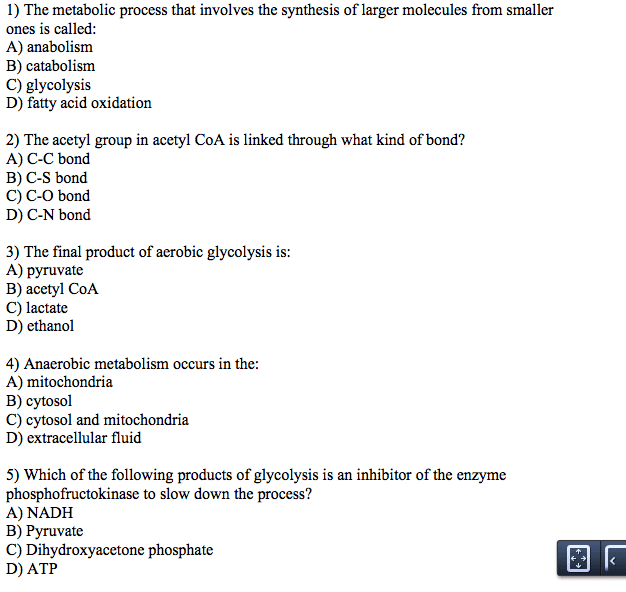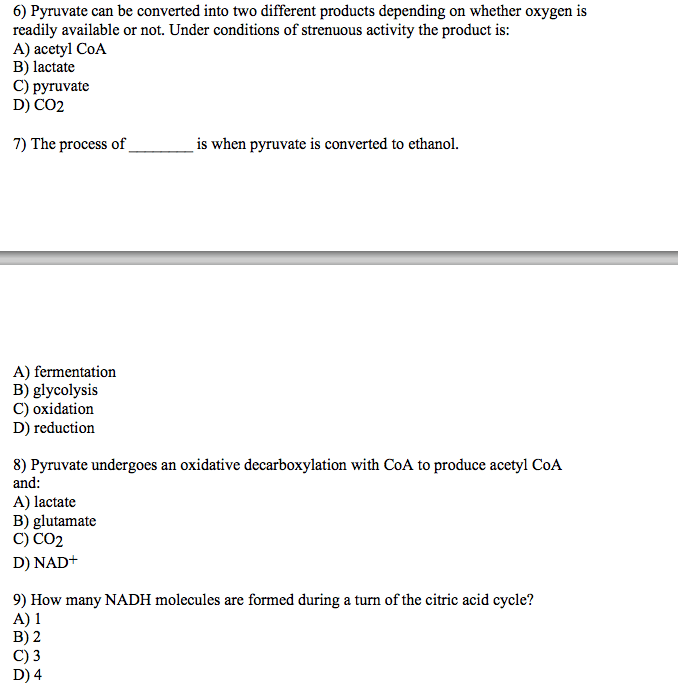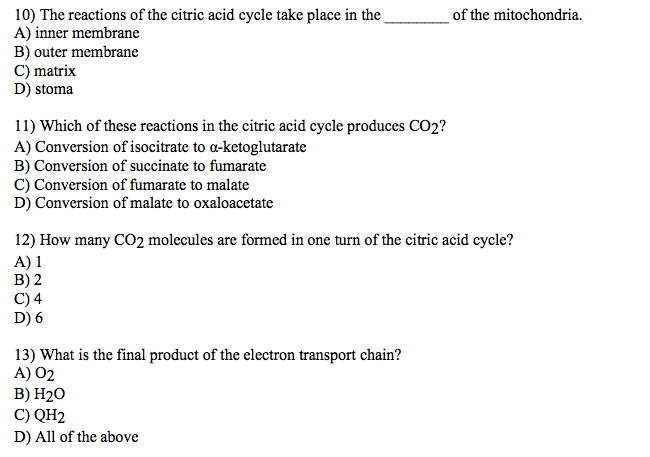1.
Why does an electron have lower potential energy in an H-O bondthan in an O=O bond?
H has a higher electronegativity than O.
O=O is not stable.
O=O contains a double bond.
The electrons are closer to the oxygen atom in the H-O bond.
None of the answers are correct.
2.
How is the energy from the electron transport chain used mostdirectly?
to form the bonds of a water molecule
to pump hydrogen ions across the mitochondrial inner membraneinto the mitochondrial intermembrane space
to join ADP with a phosphate
to decompose glucose into pyruvate
to rotate ATP synthase
3.
Which process provides the energy needed to pump protons acrossthe mitochondrial membrane during oxidative phosphorylation?
the transfer of electrons in redox reactions
the breakdown of ATP to ADP
the rotation of the ATP synthase rotor
oxidation of isocitrate
None of the answers are correct.
4.
What causes the ATP synthase rotor to spin?
the passing of electrons through ATP synthase
the movement of protons across the mitochondrial membrane
the movement of electrons across the mitochondrial membrane
the synthesis of ATP from ADP and a phosphate group
None of the answers are correct.
5.
What of the following generates the proton-motive force duringoxidative phosphorylation?
buildup of NADH molecules at protein complex I
movement of H+ ions across the mitochondrial membraneduring electron transport
rotation of the ATP synthase rotor
joining of H+ ions with oxygen to form water
None of the answers are correct.
6.
Suppose a microorganism invades a cell, causing damage to ATPsynthase. How would cellular respiration be affected?
Electrons could not be passed down the electron transportchain.
ADP could not be joined with a phosphate to form ATP.
Hydrogen ions could not be pumped into the mitochondrialintermembrane space.
The cell could not release any energy from the glucosemolecule.
Glucose could not be broken down into pyruvate.
7.
Which molecules transport electrons from the citric acid cycleto the electron transport chain?
NADH and FADH2
ATP and ADP
GTP and GDP
oxaloacetate and citric acid
None of the answers are correct.
8.
Which type of reactions control the energy release from glucoseduring the citric acid cycle?
acid-base reactions
redox reactions
random reactions
All answers are correct.
None of the answers are correct.
9.
What is the role of NAD+ in cellular respiration?
to receive electrons from the citric acid cycle and deliver themto the electron transport chain
to catalyze the synthesis of ATP from ADP
to accumulate in the mitochondrial intermembrane space tofacilitate ATP synthesis
to serve as a substrate to bind to acetyl-CoA at the beginningof the citric acid cycle
None of the answers are correct.
10.
Which molecule enters the citric acid cycle?
glucose
pyruvate
ATP
acetyl-CoA
None of the answers are correct.






